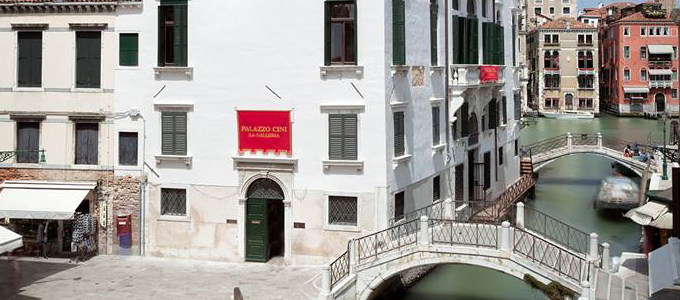
The Palazzo Cini Gallery

On 25 April the Palazzo Cini Gallery at San Vio will re-open to the public, thanks to a partnership with Assicurazioni Generali, with a number of new attractions for visitors. Some additional works of arts will further enhance the itinerary and a series of exhibitions will be held on the second floor, while this year’s cultural activities programme includes the return of A Guest at the Palace and Art Conversations. Thanks to the generosity of Lyda Guglielmi, Yana Cini’s daughter, a significant group of paintings and furnishings, previously in the extraordinary collection put together by the Vittorio Cini in his palace on the Grand Canal, will enter the Palazzo Cini Gallery collections. Firstly, a fascinating panel by Stefano di Giovanni called Sassetta, depicting Saint John the Baptist (the Gallery already has the Madonna of Humility by the same artist). The newly arrived painting thus provides further insight into the Sienese Quattrocento, already represented by works of the Master of the Osservanza, Matteo di Giovanni and Lorenzo di Pietro called Vecchietta. After many years, two other objects have returned to embellish the aristocratic rooms of the house in which Count Cini resided: a monumental 16th-century table supported by caryatids and robust telamons in the manner of Sansovino; and a richly carved wardrobe decorated by graceful female figures and cherubs, also traditionally attributed to the circle of Sansovino. The recently arrived works also include a silver reliquary with a bust of Saint Valerius, made by French goldsmiths and a rare document-holder from the mid-15th century made of incised red leather with the cuir bouilli technique, once owned by the Duke of Ferrara, Borso d’Este, as revealed by the coat of arms decorating the front. Lastly, also worth mentioning for their exceptional place in the context of the Gallery collections, there are two works depicting fantasy male portraits by Lorenzo Tiepolo. These works are in a genre commonly found 18th-century Venice. The two enchanting fantasy heads are in fact similar to examples made by Lorenzo’s brother Giandomenico and his father Giambattista.
Another important new development this year is the reopening of the second floor of the Palace to be used after refurbishment to host lectures, presentations and temporary exhibitions: after the spring opening of an exhibition of works by Ettore Spalletti, in autumn there will be a show of a selection of the most important and representative drawings (15th to 20th centuries), chosen from the collections of the Fondazione Giorgio Cini Institute of Art History.
In addition to the exhibitions installed on the upper floor, A Guest at the Palace, an initiative successfully launched last year, will continue. The result of significant collaboration with major Italian and foreign institutions and museums, this involves the Gallery in hosting a guest work in its rooms with the idea of creating a dialogue with the works in the permanent collection, based on an intense interplay of visual relations and content. In June a Madonna and Child by Fra Angelico will be on show. This is the celebrated Madonna of Pontassieve, a work datable to around 1435 or the last years of the artist’s career. It was probably originally the central panel in the lost polyptych made for a church in the Tuscan town of Pontassieve, now in the Galleria degli Uffizi, Florence.
Lastly, Art Conversations will resume. This series of meetings is conceived to provide opportunities for discussions about art with visitors, be they experts, enthusiasts or simply interested members of the public. The programme consists of regular dates at the Palazzo Cini with art historians and experts who will illustrate in an engaging way the history of the Gallery and its collections. In 2015 there will be two series of Art Conversations (in spring and autumn) providing another chance to explore the great themes of art history in a unique setting – a splendid museum house containing masterpieces of Tuscan and Ferrarese paintings, fine wooden sculptures, enamels on copper made in Venice, Mediaeval and Renaissance ivories, porcelain and furnishings.
